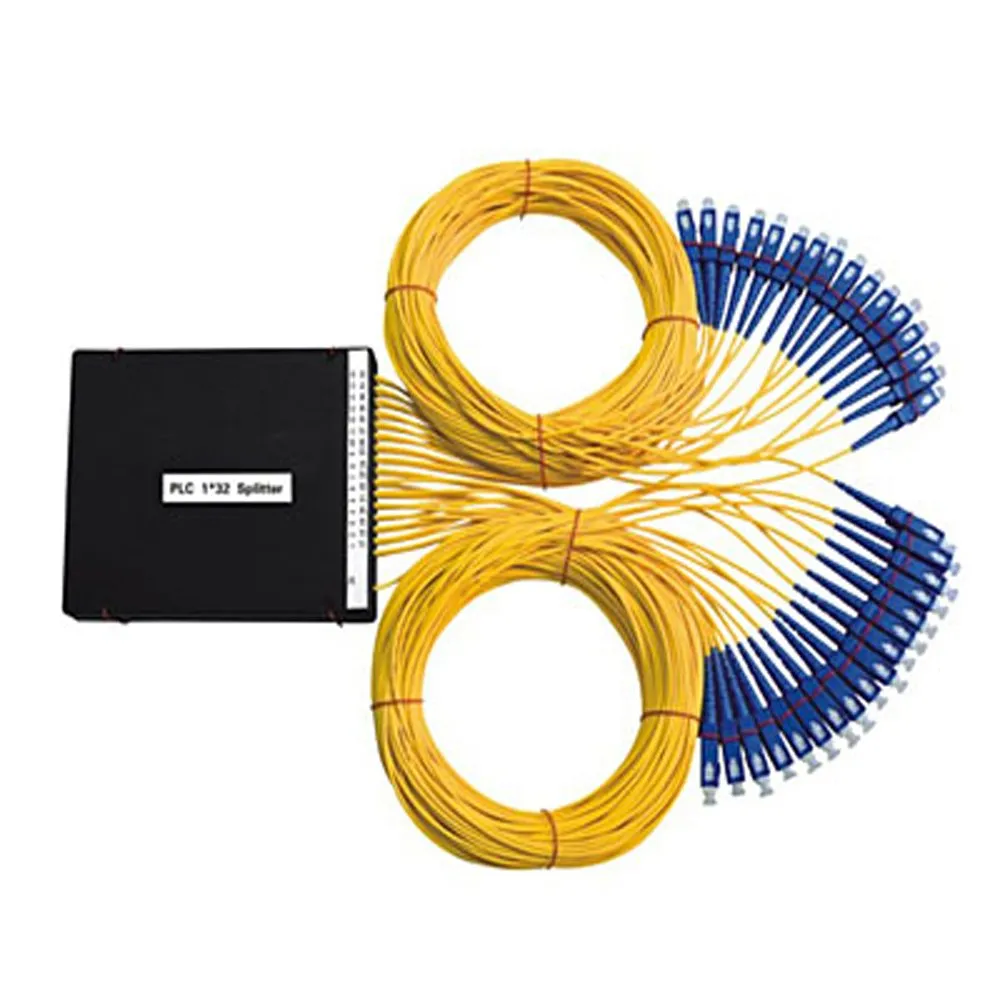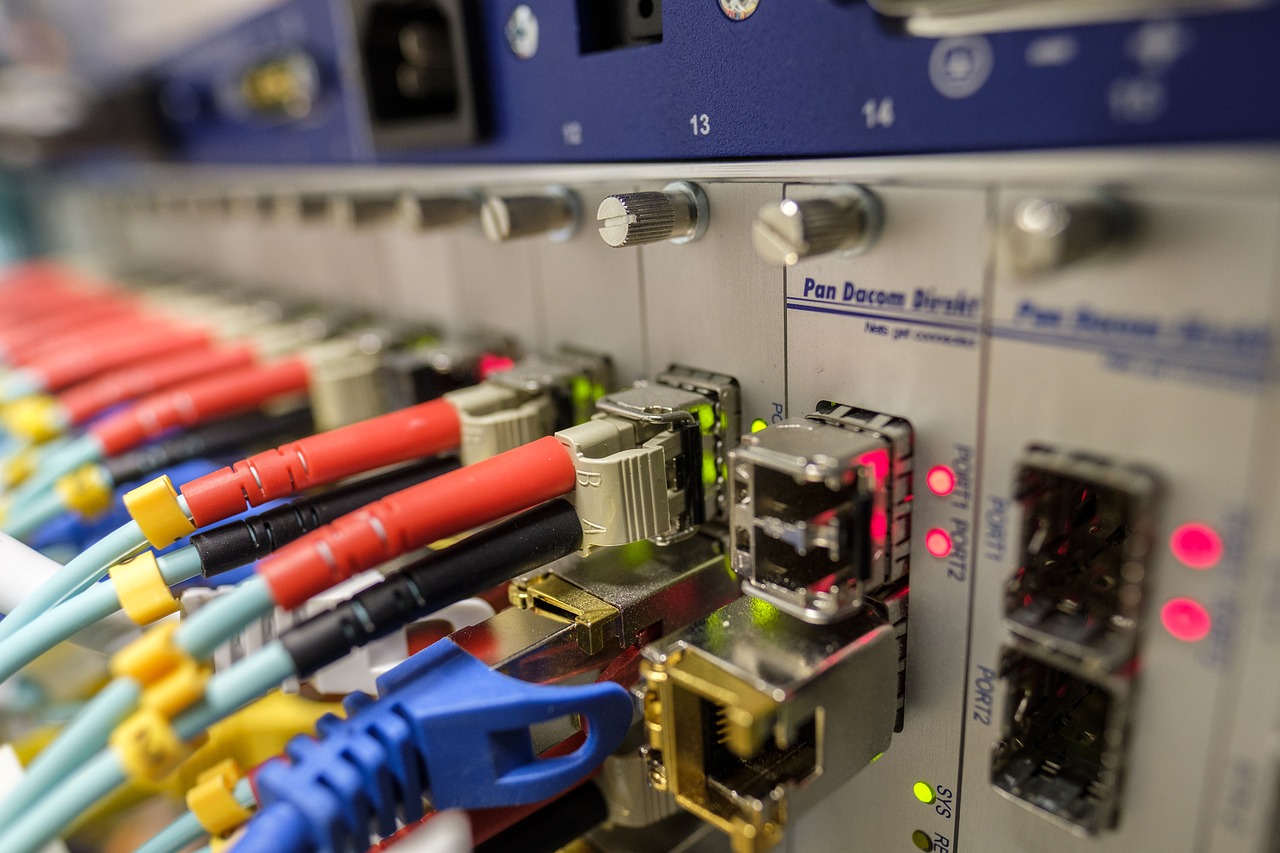1×32 PLC Fiber Splitter ABS Box Module vs. SC/UPC Singlemode: Interface Types Compared

Understanding the Basics
In the ever-evolving landscape of digital connectivity, Fiber Splitters play a crucial role in ensuring efficient and reliable data transmission. But what exactly is a Fiber Splitter and why is it essential for network infrastructure?
What is a Fiber Splitter?
A Fiber Splitter is a passive optical device that takes an input optical signal and splits it into multiple output signals. It acts as a pivotal component in fiber optic networks, enabling one input to be distributed across several outputs without the need for powered components. This technology facilitates the sharing of data across various network paths, making it an indispensable tool for telecommunications, internet services, and other data-intensive applications.
The role in our digital world
In our increasingly interconnected world, where seamless communication and rapid data transfer are paramount, Fiber Splitters contribute to the efficiency and reliability of network operations. They enable the expansion of network capacity by allowing a single optical signal to serve multiple end-users or destinations.
The Importance of Interface Types
When it comes to network infrastructure, the interface type of Fiber Splitters holds significant importance. The choice of interface type can impact signal quality, compatibility with existing equipment, and overall network performance.
Why it matters for your network
The interface type determines how the Fiber Splitter will connect with other components within the network. Whether it's for local area networks (LANs), data centers, or telecommunications systems, selecting the appropriate interface type is crucial for ensuring seamless integration and optimal functionality.
Exploring SC/UPC Singlemode Interface Types
In the realm of fiber optic connectivity, the SC/UPC interface type holds a significant position, offering distinct advantages for network infrastructure. Let's delve into what SC/UPC stands for and explore the advantages of the singlemode interface type.
What Does SC/UPC Stand For?
The acronym SC/UPC stands for "Subscriber Connector/Ultra Physical Contact." The "Subscriber Connector" denotes its widespread use in subscriber network connections, while "Ultra Physical Contact" signifies the enhanced physical contact between connectors, ensuring minimal insertion loss and back reflection. This high-precision connection is vital for maintaining signal integrity and minimizing disruptions in data transmission.
Decoding the acronym
The designation of SC/UPC reflects its purpose-driven design, emphasizing optimal performance and reliability in fiber optic connections. Its widespread adoption across various network applications underscores its effectiveness in meeting stringent connectivity requirements.
The Singlemode Advantage
When it comes to long-distance data transmission, the singlemode interface type offers unparalleled advantages. By utilizing a smaller core size and a single transmission mode, singlemode fibers can carry signals over extended distances with minimal signal degradation.
Why it's chosen for long distances
The choice of singlemode fibers for long-distance transmission is rooted in their ability to minimize modal dispersion, allowing light to travel in a straight line without bouncing off the edges of the core. This characteristic enables singlemode fibers to support higher bandwidths over extended distances, making them ideal for applications that demand reliable data transmission over vast network spans.
In addition to their long-distance capabilities, singlemode fibers exhibit lower signal attenuation compared to multimode fibers, further enhancing their suitability for transmitting signals across expansive networks.
Comparing Interface Types: Practical Insights
When considering the Fiber Splitter with ABS Box Module versus the SC/UPC interface type, it's essential to weigh their respective features and applications to make an informed decision for your network infrastructure.
Fiber Splitter with ABS Box Module vs. SC/UPC
A side-by-side comparison
The Fiber Splitter with ABS Box Module is designed with a compact and sturdy housing that provides protection for the splitter components. This module offers versatility in installation, making it suitable for various indoor and outdoor settings. Its robust construction ensures reliable performance even in challenging environmental conditions, making it a practical choice for diverse network deployments.
On the other hand, the SC/UPC interface type boasts exceptional precision and low insertion loss, contributing to superior signal integrity and minimal disruptions in data transmission. Its standardized design and widespread adoption in telecommunications and data networking underscore its reliability and compatibility with existing network infrastructure.
In terms of scalability, the Fiber Splitter with ABS Box Module offers flexibility in expanding network capacity by accommodating additional fiber connections without compromising performance. This scalability is particularly advantageous for evolving network requirements, allowing seamless upgrades without significant overhauls to the existing infrastructure.
Conversely, the SC/UPC interface type excels in long-distance applications, leveraging its singlemode fiber capabilities to transmit signals over extended distances with minimal attenuation. Its ability to maintain signal quality over vast network spans makes it an ideal choice for telecommunication networks, high-speed data transmission, and other long-haul connectivity needs.
Real-World Applications
Where each type shines
The Fiber Splitter with ABS Box Module finds practical utility in scenarios that demand robustness and adaptability. Its rugged design makes it well-suited for outdoor installations, such as fiber-to-the-home (FTTH) deployments, where exposure to environmental elements requires durable equipment that can withstand varying conditions.
Conversely, the SC/UPC interface type thrives in applications that prioritize signal integrity and long-distance transmission. It is commonly employed in backbone networks, inter-building connections, and high-capacity data links where maintaining signal quality across extensive distances is paramount.
Wrapping Up
As we conclude our exploration of interface types in fiber optic connectivity, it's essential to distill the key takeaways and offer practical advice for making informed decisions tailored to your network infrastructure needs.
Key Takeaways
In the realm of fiber optic connectivity, the choice of interface type holds significant implications for signal quality, compatibility, and network performance. Understanding the distinct characteristics and applications of interface types such as Fiber Splitter with ABS Box Module and SC/UPC empowers network administrators to make strategic decisions aligned with their specific requirements.
When evaluating interface types, consider factors such as scalability, signal integrity, environmental resilience, and long-distance transmission capabilities. Each interface type offers unique advantages that cater to diverse network deployment scenarios, emphasizing the importance of aligning technological solutions with operational demands.
Simplifying the complex
Navigating the intricate landscape of fiber optic interface types can be daunting, but breaking down the technical nuances into practical insights enables a clearer understanding of their functionalities and applications. By simplifying complex concepts and highlighting real-world implications, this knowledge becomes more accessible and actionable for network stakeholders.
Making the Right Choice for Your Needs
Drawing from my experience in deploying fiber optic networks across varied environments, I offer personal advice on navigating the selection process for interface types. Prioritize a thorough assessment of your network requirements, considering factors such as anticipated growth, environmental conditions, signal fidelity demands, and distance considerations.
Personal advice from my experience
When selecting an interface type for your network infrastructure, engage in collaborative discussions with industry experts and technology providers to gain comprehensive insights into the suitability of each option. Additionally, leverage real-world case studies and performance benchmarks to inform your decision-making process effectively.
By integrating these insights into your decision-making framework, you can confidently select an interface type that aligns with your network's present needs while accommodating future expansion and technological advancements.
In summary, understanding the nuances of interface types equips you with the knowledge needed to make informed choices that optimize your network's performance and reliability. Embrace this knowledge as a catalyst for driving seamless connectivity within your digital ecosystem.
See Also
A Comprehensive Manual for 1x32 PLC Fiber Splitter with SC/APC
Exploring the Characteristics of 1*16 CH, SC/APC Single Fiber DWDM Mux Demux
Selecting the Perfect PLC Optical Splitter for Your Single-Mode Fiber Network
Contrasting LC/UPC and SC/UPC Connectors for Multimode Fiber Cables
Important Specifications for 1:32 Fiber Optical Splitter with SC APC


